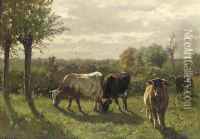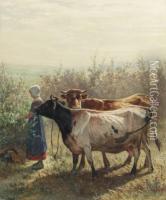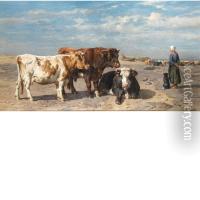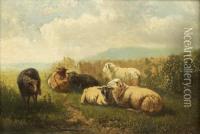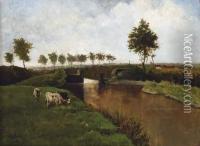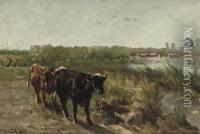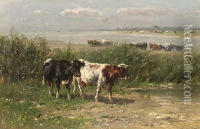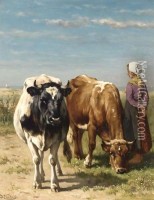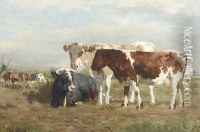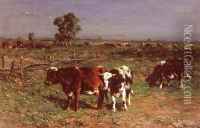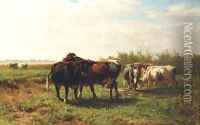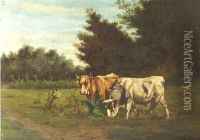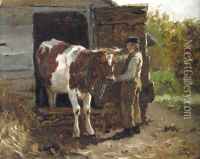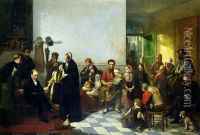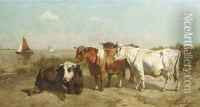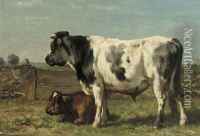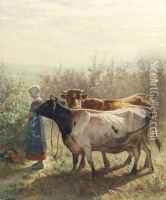Johannes-Hubertus-Leonardus de Haas Paintings
Johannes Hubertus Leonardus de Haas was a Dutch animal and landscape painter born on March 25, 1832, in Hedel, the Netherlands. He is best known for his pastoral scenes, often featuring cattle, which reflect the Realist trends of the 19th century. De Haas displayed artistic talent from an early age and was initially taught by his brother-in-law, Pieter Frederik van Os, a respected landscape painter of animals, particularly horses and cows.
In pursuit of formal art education, de Haas enrolled at the Academy of Fine Arts in Antwerp in 1852. There, he studied under renowned Belgian artist Nicaise de Keyser and was influenced by the Belgian Romantic school. However, de Haas's style gravitated toward Realism, influenced by the Barbizon school and artists such as Constant Troyon and Charles Jacque.
In 1855, de Haas moved to Brussels, where he became a member of the artist group known as the Société Royale Belge des Aquarellistes. His work started gaining recognition, and he exhibited at various prestigious venues, including the Paris Salon. His paintings were well-received for their attention to detail, the realistic depiction of animals, and the harmonious portrayal of light.
Johannes Hubertus Leonardus de Haas's success allowed him to travel. He visited Germany and France, where he was further exposed to new artistic techniques and styles. In 1860, he married Elise Therese Louise de Sande Bakhuizen, a painter and the daughter of the landscape painter Hendrik van de Sande Bakhuyzen. This union further connected him to the Dutch art world.
In 1862, de Haas moved to Königswinter, Germany, where he continued to work and exhibit his art. His paintings often portrayed the idyllic Rhine landscapes and the rural life surrounding it. De Haas's works were characterized by a fine sense of naturalism and an ability to capture the essence of the animals he painted.
Throughout his career, Johannes Hubertus Leonardus de Haas received numerous awards and honors for his contributions to the art world. His works were collected internationally and remain on display in several museums across Europe.
De Haas's commitment to Realism and his love for nature made him a significant figure in 19th-century Dutch and Belgian art circles. He passed away on August 4, 1908, in Königswinter, leaving behind a legacy that continues to be admired by art enthusiasts and collectors alike.
